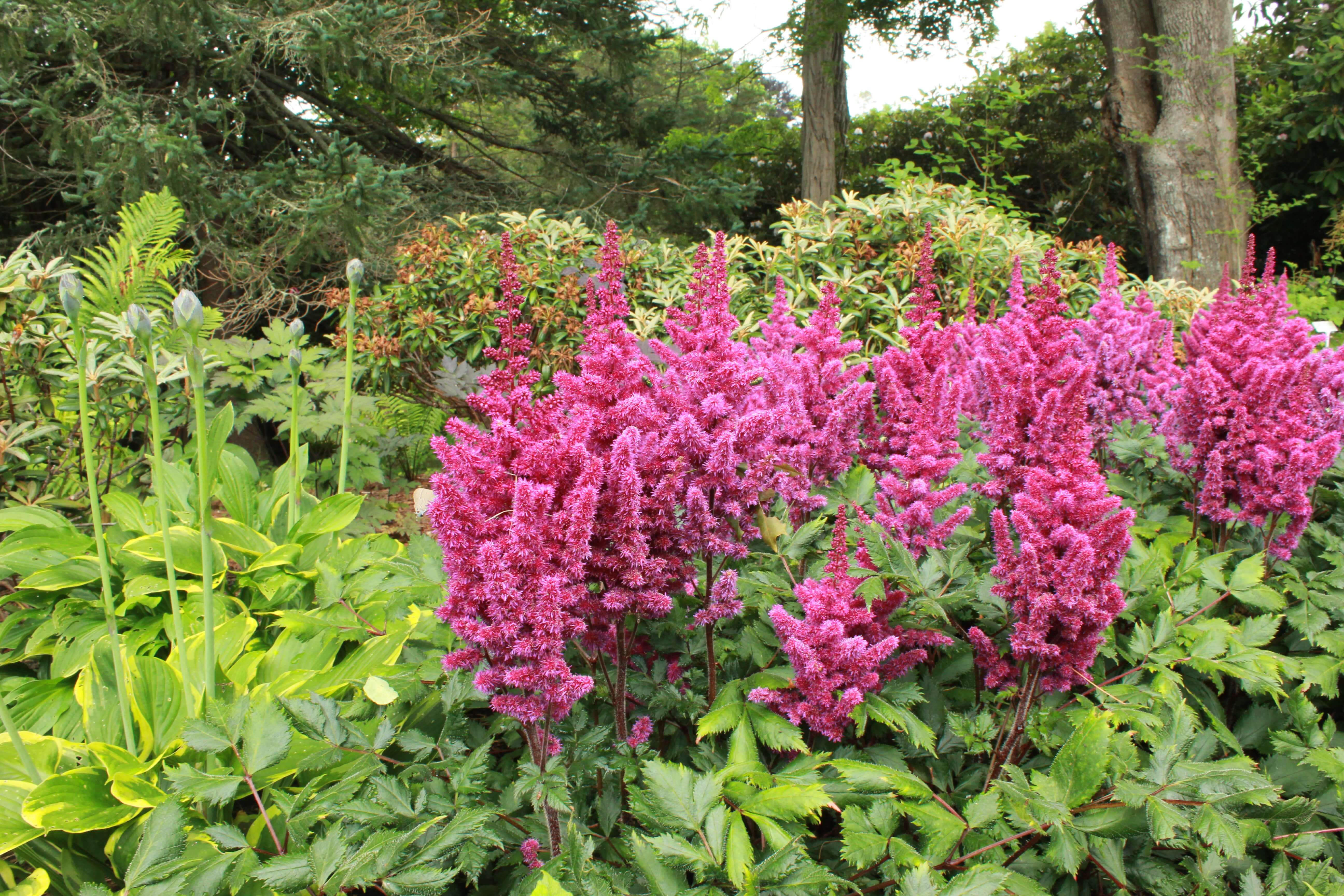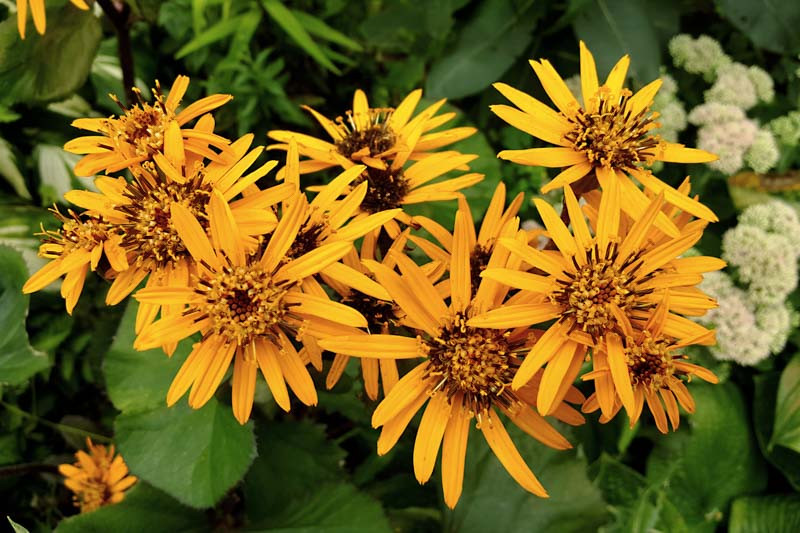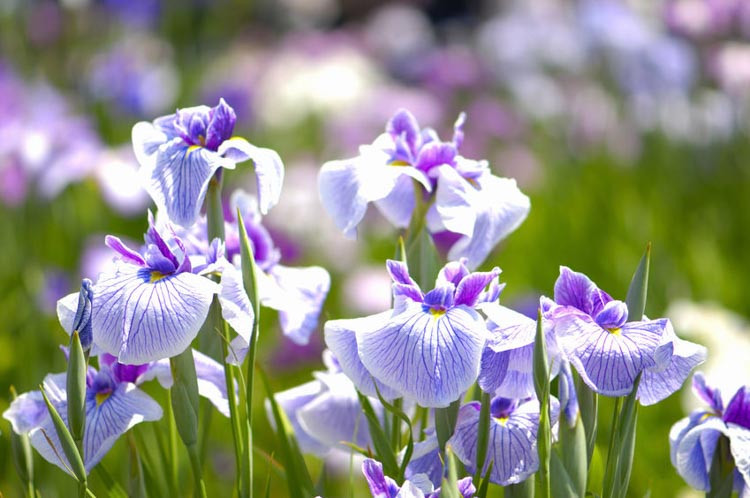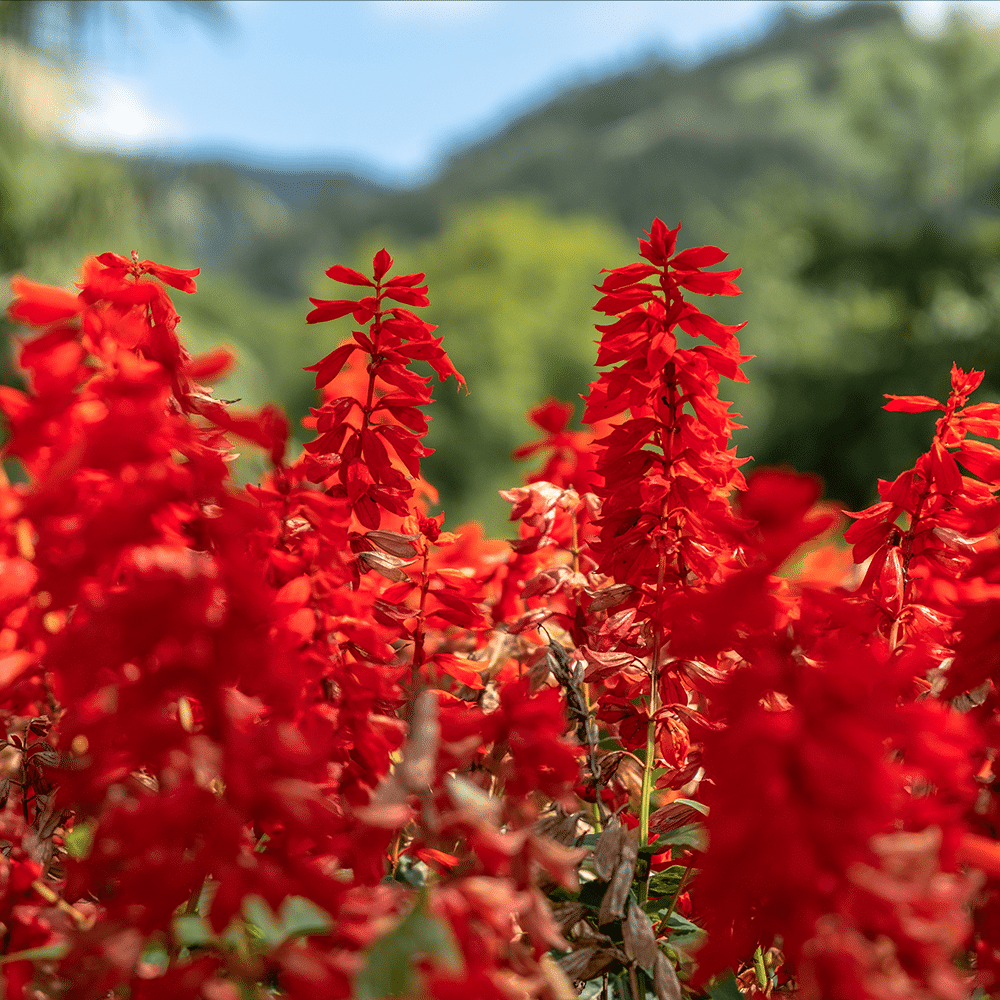If you’re searching for the best perennials for wet soil in Vancouver, you’re not alone. From misty mornings to full-blown downpours, this city’s gardens are constantly soaked. And while some plants like begonias, petunias, or pansies—sulk and rot in all that moisture, others flourish. These are the hardy perennials that not only survive the wet but actually thrive in it.
At DH Garden Centre, we see it all the time. A neighbour’s beautifully planted garden starts strong in May but is half gone by July. Why? Poor plant choices for our climate. But here’s the good news: once you understand which perennials love the rain, you can grow a vibrant, resilient garden that blooms beautifully year after year with far less effort and disappointment.
This post is for every Vancouver gardener who’s tired of battling soggy soil and disappointed blooms. Let’s introduce you to 10 perennials that laugh at the rain—and turn your garden into a low-maintenance masterpiece.

The good news: once you understand which perennials love the rain, you can grow a vibrant, resilient garden that blooms beautifully year after year with far less effort and disappointment.
Here’s a gardening truth not everyone tells you: it’s not just about how much it rains. It’s about how well your soil drains, how deep your roots go, and what kind of plants you put in the ground.
Many annuals and tender plants have shallow roots, poor tolerance for fungal diseases, and demand perfect drainage. Perennials that thrive in wet climates, on the other hand, have adapted to soggy conditions with stronger roots, moisture-loving leaves, and disease resistance.
That’s why these perennials aren’t just okay with Vancouver’s wet weather—they love it.
10 Rain-Loving Perennials for Vancouver Gardens
1. Astilbe (Astilbe chinensis / japonica)
If you’re looking for reliable perennials for wet soil in Vancouver, Astilbe is a top choice. This moisture-loving perennial thrives in shady gardens, producing soft, feathery plumes in pink, white, or red that bloom from early summer through July.
Astilbe grows best in part to full shade and loves consistently damp, well-drained soil—making it perfect for rain gardens or under tree canopies. It’s also one of the most low-maintenance perennials, requiring little care once established and rarely bothered by pests or deer.
At DH Garden Centre, we often recommend Astilbe to customers wanting colour in shady, wet spots where begonias and pansies fail. It’s not just beautiful—it’s built for Vancouver’s rainy climate.

This moisture-loving perennial thrives in shady gardens, producing soft, feathery plumes in pink, white, or red that bloom from early summer through July.
💡 Tip: Mix pink, white, and red Astilbes along pathways or under trees for a soft, romantic look that doesn’t mind getting wet.
2. Ligularia (Ligularia dentata)
If you’re dreaming of adding bold texture and colour to your rainy Vancouver garden, Ligularia might just be your secret weapon. Among the most striking perennials for wet soil, this plant is instantly recognizable thanks to its oversized, heart-shaped leaves—often spanning more than 12 inches wide—and its dramatic spikes of daisy-like yellow-orange flowers that emerge in mid-summer.
Ligularia thrives in partial shade and is particularly well-suited to bog gardens, shaded borders, or anywhere that tends to stay damp. At DH Garden Centre, we often recommend it to customers dealing with waterlogged corners or poor drainage because it doesn’t just tolerate the wet—it loves it. Plus, its large foliage creates stunning contrast when paired with finer-textured plants like ferns or astilbe.

Ligularia thrives in partial shade and is particularly well-suited to bog gardens, shaded borders, or anywhere that tends to stay damp
Varieties like ‘Britt-Marie Crawford’ bring an added punch with deep burgundy leaves that stand out against green backgrounds, making Ligularia a showstopper in any planting design. While it does prefer cooler temperatures and consistent moisture, its dramatic appearance and pollinator appeal make it well worth the investment. If your garden needs structure and personality, Ligularia delivers in spades.
3. Japanese Iris (Iris ensata)
Japanese Iris, also known as Iris ensata, is a must-have for gardeners looking to bring grace and colour to rain gardens or low-lying, wet zones. With its slender, sword-like foliage and rich blooms in hues of purple, white, or violet-blue, it creates a sense of elegance unmatched by most wet-loving plants.
This moisture-loving perennial thrives in full sun to partial shade and requires rich, acidic soil that stays consistently damp. Unlike bearded iris, which prefers drier soil, Japanese Iris will happily grow along pond edges, in bog gardens, or anywhere water tends to settle after rain.
At DH Garden Centre, we often recommend planting it near ornamental grasses or shrubs for contrast. Blooming in early to mid-summer, this plant delivers high visual impact while being surprisingly low-maintenance. Just remember: to get the best flowers, give it plenty of sun—yes, even in Vancouver.

Unlike bearded iris, which prefers drier soil, Japanese Iris will happily grow along pond edges, in bog gardens, or anywhere water tends to settle after rain.
4. Cardinal Flower (Lobelia cardinalis)
Among Canada’s most vivid native plants, Cardinal Flower is a true stunner in the soggy spots of your garden. With its bold, scarlet-red flower spikes reaching up to 3 feet tall, this perennial draws hummingbirds, butterflies, and plenty of attention during its late-summer bloom.
Cardinal Flower thrives in consistently moist to wet soils and appreciates partial shade, though it can also tolerate sun if the soil remains damp. Ideal for rain gardens, pond margins, or woodland edges, it brings an unbeatable burst of colour right when many other perennials begin to fade.
As a bonus, this native beauty gently self-seeds, expanding its presence each year without becoming invasive. For gardeners aiming to combine aesthetics with pollinator support, Cardinal Flower checks every box—and then some.

Cardinal Flower thrives in consistently moist to wet soils and appreciates partial shade, though it can also tolerate sun if the soil remains damp.
5. Joe Pye Weed (Eutrochium purpureum)
Looking to attract bees, butterflies, and curious neighbors? Joe Pye Weed is your plant. This towering perennial, native to much of North America, grows up to 6 feet tall and produces large, mauve-pink flower clusters from late summer into fall.
Its sheer size makes it a natural for the back of a border, especially in wet soils, naturalized meadows, or wildlife-friendly landscapes. At DH Garden Centre, we love recommending Joe Pye Weed to customers who want to boost biodiversity without sacrificing beauty.
It thrives in full sun to partial shade and does best in soil that stays moist. Despite its wild origins, Joe Pye Weed integrates beautifully into modern garden designs, offering vertical interest and long-lasting blooms. It’s also deer-resistant, making it ideal for gardens near wooded areas.
6. Swamp Milkweed (Asclepias incarnata)
If you want to help save the monarch butterfly, start with Swamp Milkweed. Unlike its more common cousin (the common milkweed), this variety is better behaved in gardens and thrives in wet soils, making it ideal for rain gardens and low-lying spaces.
Swamp Milkweed blooms in mid-summer with fragrant clusters of pink flowers that provide nectar for butterflies, bees, and other pollinators. More importantly, it serves as a host plant for monarch caterpillars. Its upright growth and narrow leaves make it a graceful addition to mixed perennial beds.
This plant prefers full sun and consistently moist conditions but can adapt to a range of soil types. And the best part? Once it’s established, it returns year after year with minimal care—just cut it back in early spring to keep it looking neat.
7. Siberian Iris (Iris sibirica)
Among low-maintenance perennials that perform in wet soils, Siberian Iris is a favourite for its reliability and grace. Its fine, grass-like foliage and delicate, blue to purple blooms make it an excellent companion to bolder plants like Ligularia or hostas.
Siberian Iris prefers full sun but will tolerate partial shade, and it can handle clay-rich or moist soils with ease. Blooming in early summer, it brings colour and movement to rain gardens, water features, or even container plantings.
Best of all, it’s virtually pest-free, drought-tolerant once established, and doesn’t require division as frequently as other irises. Whether you’re creating a Japanese-inspired garden or just want something that comes back strong every year, this plant delivers.
8. Obedient Plant (Physostegia virginiana)
Don’t let the name fool you—Obedient Plant can spread enthusiastically if left unchecked. But in a large, moisture-rich garden, this trait becomes an asset. With its spires of pink or purple snapdragon-like blooms, Obedient Plant brings vertical interest and pollinator appeal to rain gardens and wet borders.
It prefers full sun but will tolerate partial shade and performs best in consistently damp, loamy soil. Bees love it, and its square stems and symmetrical flowers add a charming touch of structure to looser planting designs.
If you’re worried about it spreading too far, just install a root barrier or grow it in containers. Either way, it’s a lively and long-blooming addition to any soggy spot.
9. Blue Flag Iris (Iris versicolor)
Blue Flag Iris is one of Canada’s most beloved native wetland plants, and for good reason. With its striking blue-violet flowers and sturdy, upright foliage, it’s a natural fit for boggy soils, pond edges, and rain gardens.
This iris thrives in full sun or light shade and can tolerate standing water, making it one of the most flood-tolerant perennials available. It supports local biodiversity and provides nectar for bees and butterflies while requiring very little maintenance.
Its wild, natural look is especially effective in ecological garden designs, but it’s equally at home in a formal border. Want to create a coastal or lakeside garden vibe in the heart of Vancouver? Start with Blue Flag Iris.
10. Marsh Marigold (Caltha palustris)
Marsh Marigold is one of the first perennials to bloom in spring, and it does so with cheerful, buttercup-yellow flowers that glow against wet, dark soil. Native to wetlands across Canada, this low-growing plant thrives in partial shade and boggy conditions.
Its rounded leaves and early-season colour make it perfect for lining a pond, bordering a rain garden, or filling in low, soggy corners of your landscape. It requires almost no care—just give it the moist soil it craves, and it will return each year with renewed brightness.
For gardeners looking to bring early colour and a natural look to shady, wet spaces, Marsh Marigold is a small plant with big impact.
Common Mistakes to Avoid in Wet Gardens
Mistake 1: Choosing the Wrong Plants
Trying to grow dry-soil annuals in a rain-soaked yard is like planting succulents in a swamp. It just won’t work. Always check for moisture preferences when shopping for plants.
Mistake 2: Overwatering Perennials That Already Love Rain
Yes, even rain-loving plants can drown if you’re overwatering. Vancouver’s natural rainfall is usually enough.
Mistake 3: Not Improving Drainage
Just because a plant tolerates wet soil doesn’t mean it wants to sit in stagnant water. Use organic compost to improve drainage or consider raised beds if your soil is heavy clay.
How to Build a Rain-Tolerant Garden in Vancouver
1. Map Your Moisture Zones
Walk your garden after a storm. Where does water pool? Which areas drain quickly? Use this to decide what to plant where.
2. Use Compost Generously
Organic compost helps retain just the right amount of water while improving soil structure. At DH Garden Centre, we stock composts ideal for Vancouver clay.
3. Group Plants by Needs
Don’t mix dry-loving lavender with soggy-loving Astilbe. Group your plants so they all receive the care and conditions they thrive in.
4. Add Mulch
Mulch suppresses weeds, reduces erosion, and helps soil retain moisture during dry spells without getting too soggy during wet ones.
Why We Love Perennials (And You Will Too)
Perennials are the backbone of a resilient garden. They come back every year, need less maintenance than annuals, and get stronger over time. And when you pick the right ones—like the 10 above—you create a garden that laughs at the weather, brings pollinators, and makes neighbours say, “How do you do it?”
As a small business in Kitsilano, we at DH Garden Centre don’t just sell plants—we live and breathe gardening. Whether you’re planting your first shady border or want to transform your backyard into a pollinator paradise, we’re here to help.
Visit DH Garden Centre—Your Vancouver Rain Garden Experts
🌧️ Want a garden that thrives, not just survives, in the rain? Visit us at:
📍 DH Garden Centre Ltd.
3742 West 10th Avenue, Vancouver, BC V6R 2G4
📞 604-929-7335
🌐 dhgardencentre.com
📸 Instagram: @dh.garden.centre
📘 Facebook: DH Garden Centre
📺 YouTube: The Plant Doctor
Whether you’re a seasoned gardener or just getting your hands dirty for the first time—we’ll guide you every step of the way.
Final Words: Rain Is a Gift—If You Grow With It
When you stop fighting the rain and start planting for it, everything changes. You spend less time troubleshooting and more time enjoying. You invite butterflies, birds, and colour into your space. You become the kind of gardener whose backyard glows even in the greyest week of February.
So next time your neighbour’s begonias are rotting in the rain, smile. You’ve planted the right perennials—and your garden is better for it.

